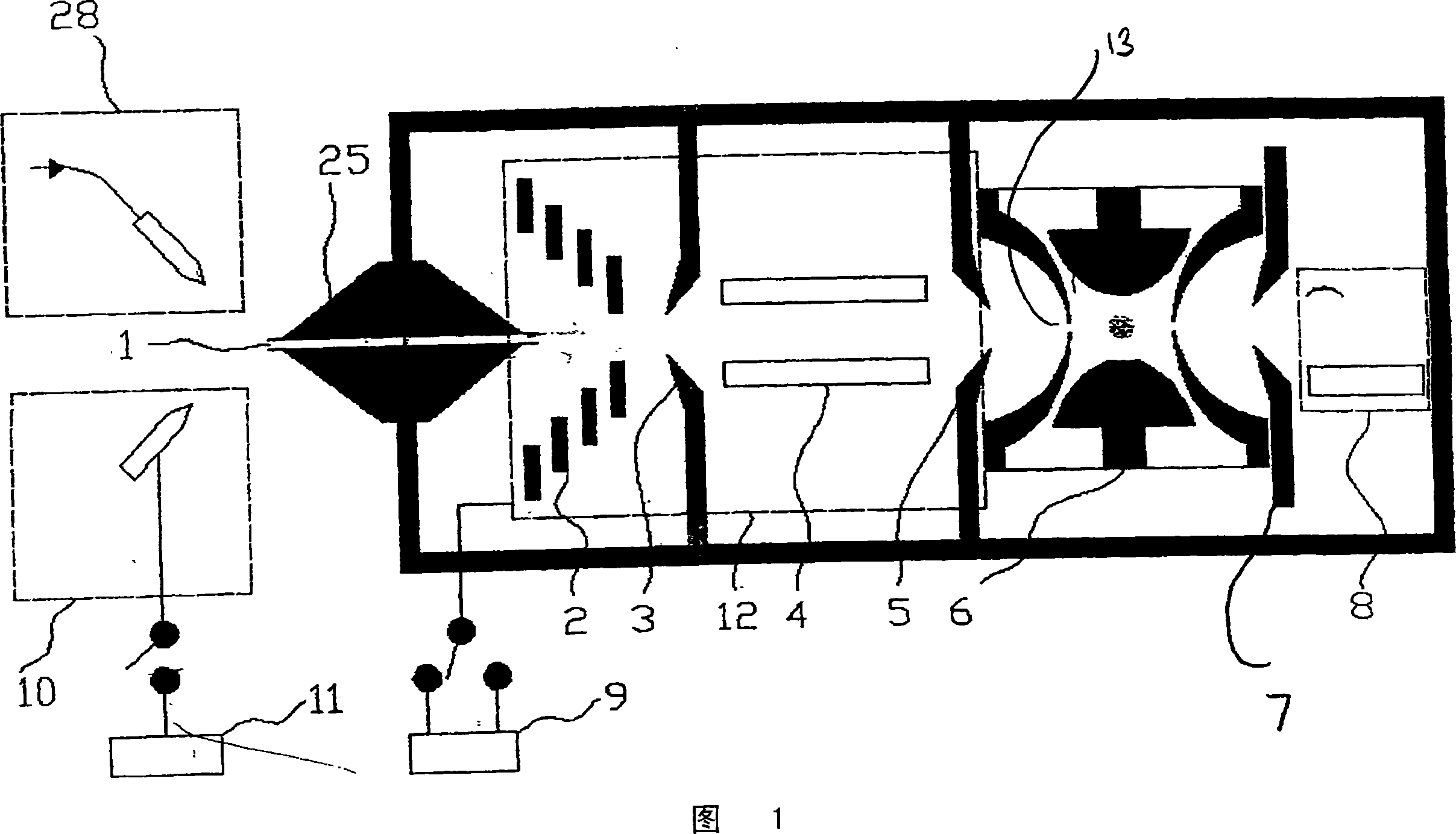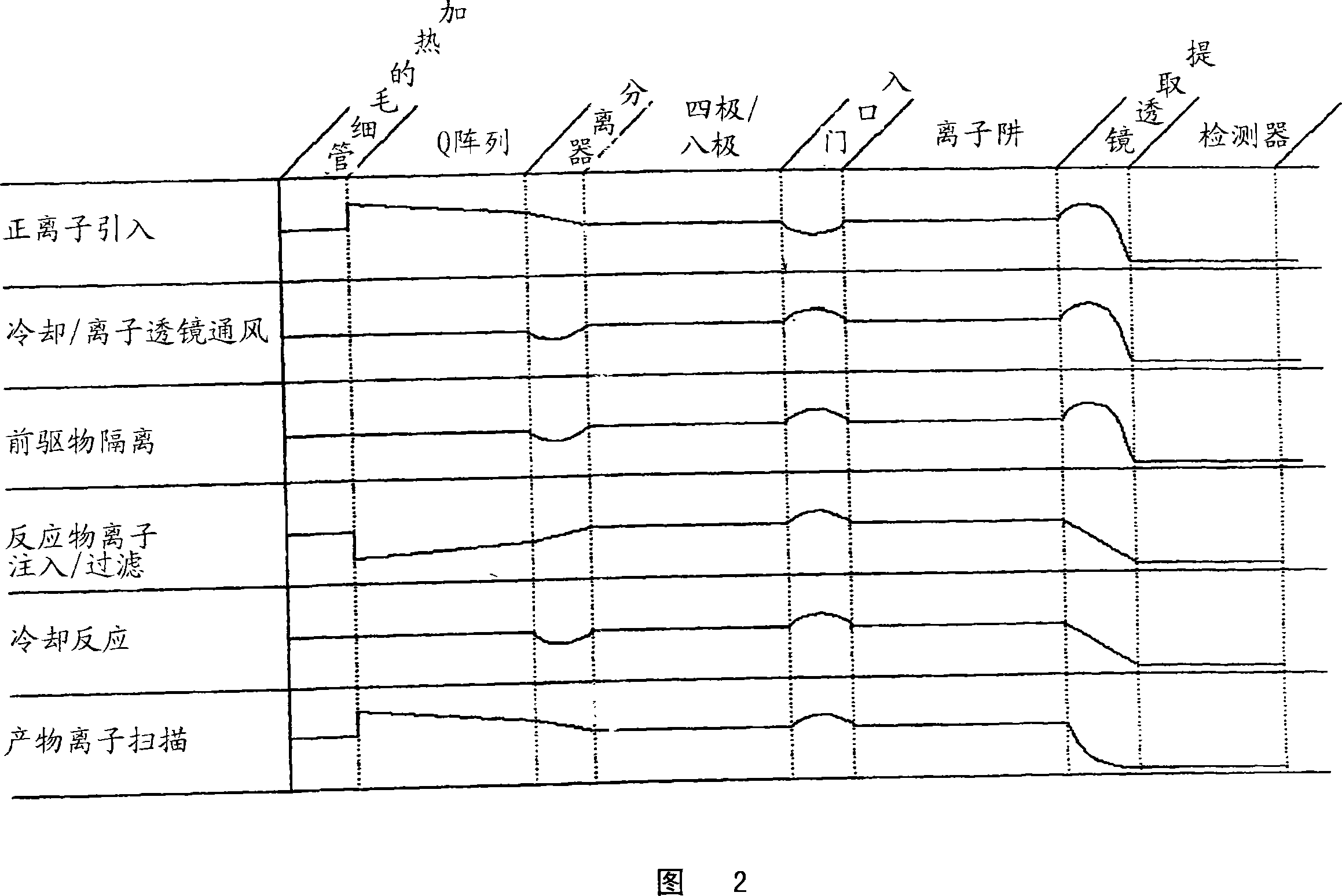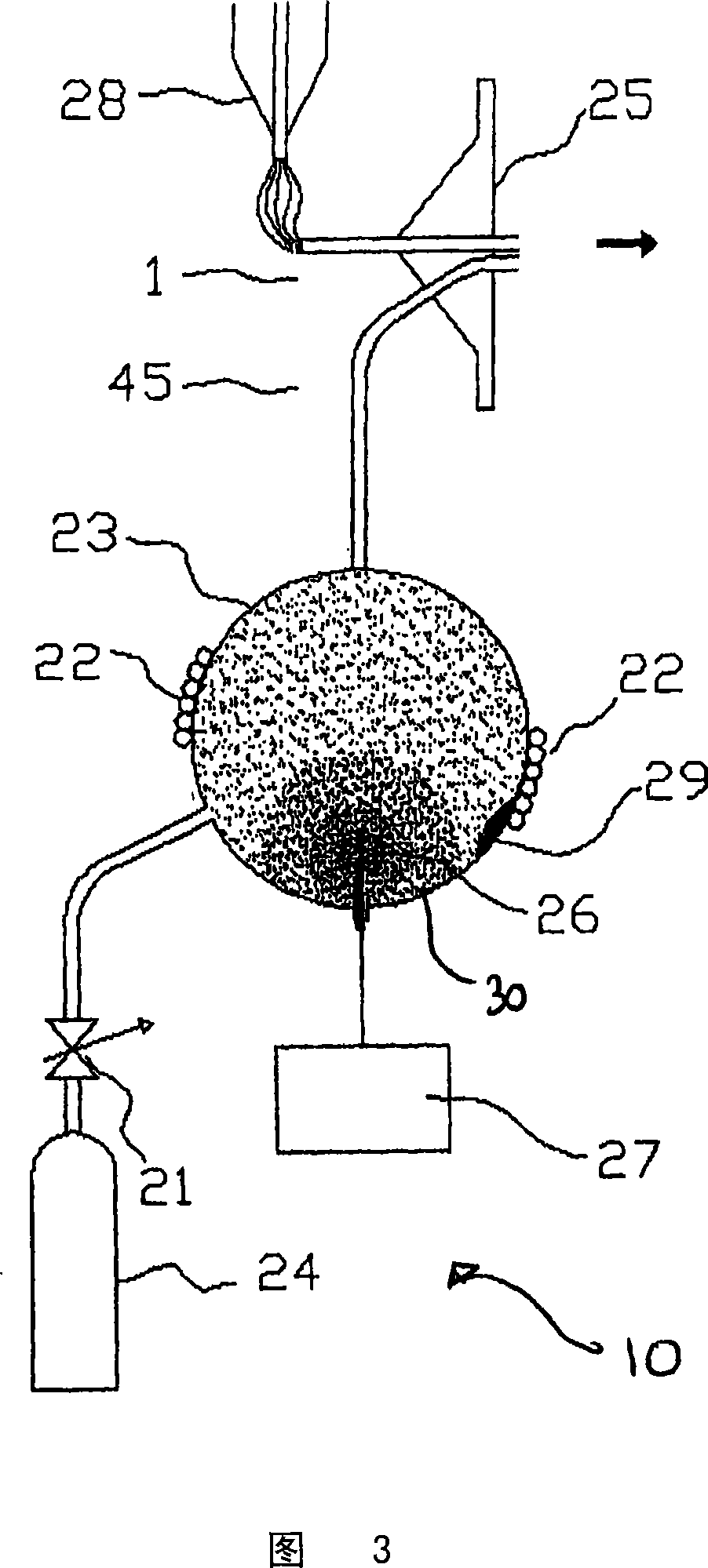Method for introducing ions into an ion trap and an ion storage apparatus
A technology for ion introduction and ion storage, which is applied in the direction of positive/negative analyte ion analysis/introduction/generation, ion source/gun, electron/ion optical device, etc., and can solve problems such as inapplicability
- Summary
- Abstract
- Description
- Claims
- Application Information
AI Technical Summary
Problems solved by technology
Method used
Image
Examples
Embodiment Construction
[0039] As shown in Figure 1, an ion trap mass spectrometer (MS) typically includes six components, namely: an analyte ion source 28, a reactant ion source 10 with a controllable power supply 11, an atmospheric pressure / low pressure interface 25 with a controllable voltage Transmission optics 12 of source 9 , ion trap 6 , and detector 8 .
[0040] Electrospray ionization (ESI) is a method commonly used to generate single or multiple charged ions from organic sample solutions. This type of ion source is often used as a link between a liquid chromatograph (LC) and a mass spectrometer (MS). The atmospheric pressure / low pressure interface 25 is used to pull the wet charged particles from the ESI into the vacuum chamber of the MS and dry them by a process called desolvation. This atmospheric pressure / low pressure interface can be in the form of a heated capillary / ion inlet (as shown at 1 in Figure 1), or alternatively can be in the form of multiple tapered apertures with heated gas...
PUM
 Login to View More
Login to View More Abstract
Description
Claims
Application Information
 Login to View More
Login to View More - R&D
- Intellectual Property
- Life Sciences
- Materials
- Tech Scout
- Unparalleled Data Quality
- Higher Quality Content
- 60% Fewer Hallucinations
Browse by: Latest US Patents, China's latest patents, Technical Efficacy Thesaurus, Application Domain, Technology Topic, Popular Technical Reports.
© 2025 PatSnap. All rights reserved.Legal|Privacy policy|Modern Slavery Act Transparency Statement|Sitemap|About US| Contact US: help@patsnap.com



